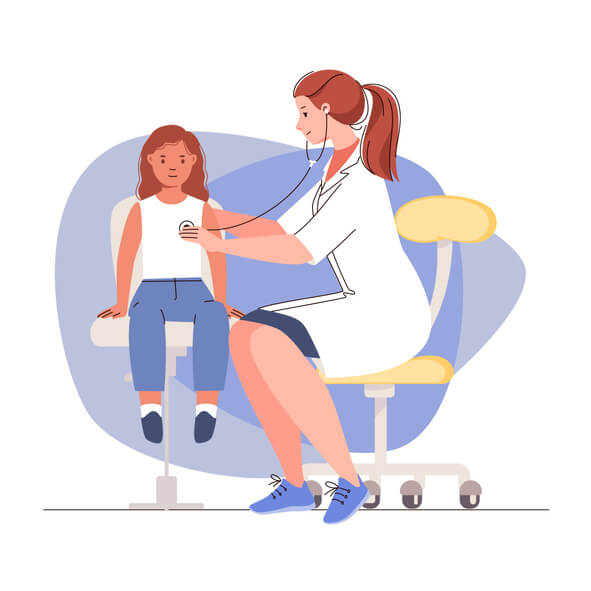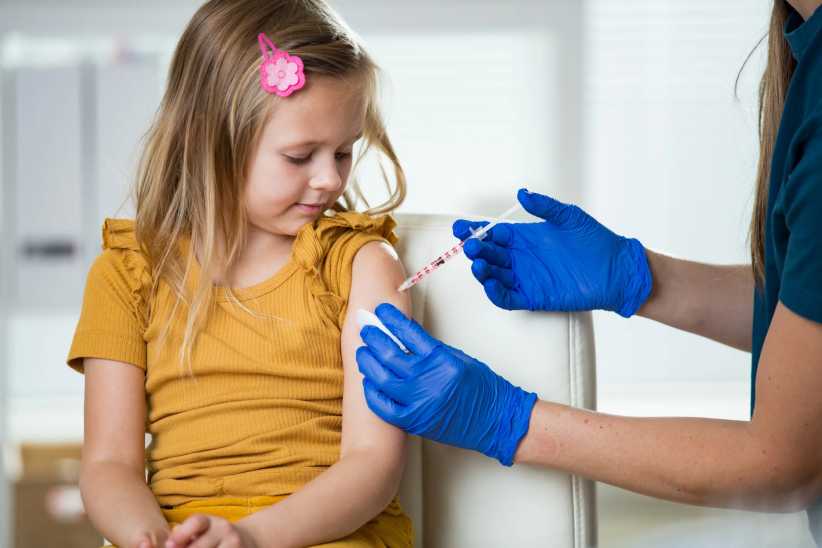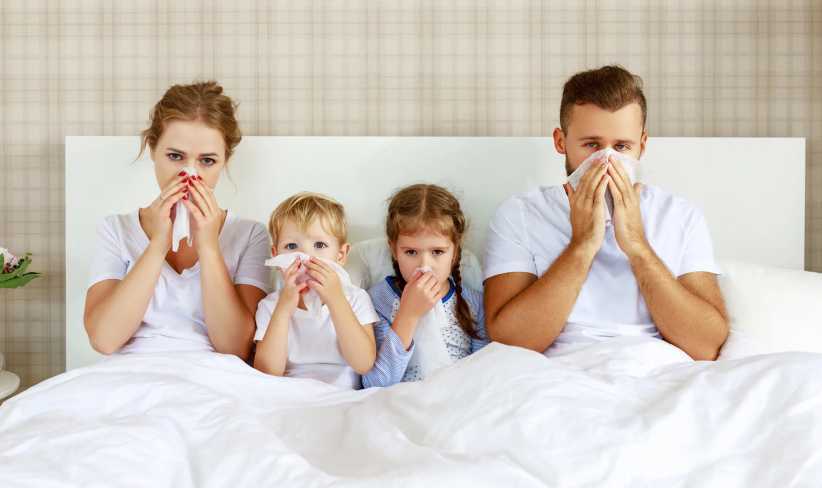
New Treatment Guidelines for Childhood Obesity Include Medication, Surgery
As the body positivity movement continues to trend, the American Academy of Pediatrics announced on Monday new treatment guidelines for childhood obesity that includes early use of medications and weight-loss surgery.
In recent years, body positivity has grown in popularity. Plus-size models grace the covers of major fashion magazines and shopping sites. Artists write songs about defying the stereotypical “model” body. And strangers argue on social media about what it means to be “fat.” But the new AAP guidelines seem to serve as a reminder that being very overweight can—in fact—be very dangerous.
This is the first comprehensive update to the AAP’s obesity treatment guidance in 15 years. Published in the journal, Pediatrics, a major highlight includes recommendations on medical care for kids as young as 2 and through the teen years who struggle with obesity.
“The goal is to help patients make changes in lifestyle, behaviors or environment in a way that is sustainable and involves families in decision-making at every step of the way,” Sandra Hassink, M.D., an author of the guidance and vice chair of the Clinical Practice Guideline Subcommittee on Obesity, said.
While treatment includes extreme measures such as pharmaceuticals and bariatric surgery, it does not eliminate the need to focus on good nutrition and exercise as well. In fact, a bulk of the guidelines discuss treatment that includes nutritional support, physical activity treatment and behavioral therapy.
According to the AAP, intensive health behavior and lifestyle treatment (IHBLT) is the most effective known behavioral treatment for child obesity. It requires 26 or more hours of face-to-face, family-based multicomponent treatment over a 3- to 12-month period.
“Lifestyle changes are hard- it’s so hard. Patients, families and children need much more in the way of support than just ‘don’t drink soda’ or ‘don’t eat fast food.’ The recommended lifestyle treatment in the guidelines is a really comprehensive, family-based intensive treatment,” explained Sarah Armstrong, M.D., FAAP, chair of the section on obesity at the AAP, and professor of pediatrics at Duke University.
Medication and surgery—to be done in addition to lifestyle treatment— is an option for some children who are older and teenagers who’ve developed severe degrees of obesity.
“We’re very fortunate to have some additional options, including medications and surgery where there is evidence of them being safe and effective,” Armstrong said. “It doesn’t mean everyone has to be on medication or get surgery. It means that parents, children and doctors have choices.”
Stressed throughout the guidance is the need to intervene early.
“There is no evidence that ‘watchful waiting’ or delayed treatment is appropriate for children with obesity,” Hassink said.
The new guidelines do not discuss obesity prevention. According to the AAP, this will be addressed in another forthcoming AAP policy statement.
Psst… Check out Seasonal Affective Disorder in Children: What Parents Need to Know
Treatment Guidelines for Childhood Obesity
Weight and obesity can be controversial topics. But one thing clear to most is the increased health risks that are associated with obesity. The AAP refers to obesity as a disease that could lead to short- and long-term health concerns when left untreated, including cardiovascular diseases and diabetes. Headlines and research throughout the COVID-19 pandemic showed that many of those who died from the virus were obese.
One thing to note is that the guidelines are geared toward doctors, not necessarily parents. According to the AAP, doctors should offer adolescents ages 12 and older weight-loss drugs to treat their obesity. The fancy phrase for this is “weight-loss pharmacotherapy,” and it should be done in combination with health behavior and lifestyle treatment.
Teens ages 13 and older with severe childhood obesity should be evaluated for metabolic and bariatric surgery, the AAP adds.
More than 14.4 million U.S. kids live with obesity. And it isn’t easy—mentally or physically. The AAP noted that obesity is a disease that has been stigmatized for years, and it can be treated successfully with the recognition that complex genetic, physiologic, socioeconomic and environmental factors are at play.
“Weight is a sensitive topic for most of us, and children and teens are especially aware of the harsh and unfair stigma that comes with being affected by it,” said Sarah Hampl, M.D., a lead author of the guideline, which was created by a multidisciplinary group of experts in various fields, along with primary care providers and a family representative.
Diet and Exercise: Is it Still Important?
Yes. None of these new treatment guidelines for childhood obesity eliminate the need for proper diet and exercise. These are healthy habits that are important for all people, regardless of their weight. Dr. Bridget Cole Williams, board-certified family physician and CEO of Green Harvest Health, says that offering weight-loss surgery and drugs to children who are obese serves as a huge “red flag” on how serious the issue is.
“We’re so careful with our kids in the first place. We don’t even want our kids on any medication, let alone medication and surgery for obesity,” Williams said. “However, I think it is a humongous red flag for how bad the obesity epidemic is in our country.”
Williams underscored the need to start obesity treatment early in kids.
“We have to start earlier, and we have to start younger,” she said. “Inevitably, if we do not do something, our children with the rate of sleep apnea, asthma, bone and joint issues, as well as heart disease and diabetes, will continue to grow astronomically.”
Overweight is defined as a body mass index (BMI) at or above the 85th percentile and below the 95th percentile for children and teens of the same age and sex. Obesity is defined as a BMI at or above the 95th percentile for children and teens of the same age and sex.
Access to Nutritious Food and Opportunities for Physical Activity
As noted in the guidelines, it’s important to consider a family’s access to nutritious food and other necessities that help keep people healthy. The guidelines discuss increased risks for children with special health-care needs, as well as inequities that promote obesity in childhood, such as the marketing of unhealthy food, low socioeconomic status and household food insecurity.
“Research tells us that we need to take a close look at families—where they live, their access to nutritious food, health care and opportunities for physical activity—as well as other factors that are associated with health, quality-of- life outcomes and risks,” explained Hampl. “Our kids need the medical support, understanding and resources we can provide within a treatment plan that involves the whole family,” Hampl said.
Additional Information on Childhood Obesity
Williams added a cultural and societal shift needs to happen in order to reverse the childhood obesity epidemic.
“There are foods that are in the American diet that are not even allowed in other countries because of how fattening or toxic some of them are,” she said. “We need to change how our grocery stores look and have better access to nutritious food in lower income neighborhoods.”
Taking on these changes sound like a major feat, but Williams says it starts with the individual making simple changes. Parents can ask for half their families’ meals in a carry-out box when they eat at restaurants, spend more time shopping around the perimeter of grocery stores where the fresh foods are shelved and put less fattening foods on dinner plates.
Abrie McCoy, a certified lactation counselor with SimpliFed, a maternal and baby feeding health platform, recommends making nutrition a priority during pregnancy, too.
“Your child’s nutrition starts during gestation. In pregnancy, your body provides nutrients via the placenta and amniotic fluid, which is derived from the foods that you fuel your body with, McCoy explained.
Preventing overfeeding at the infant age is important, too.
“Using methods such as responsive feeding, infant led feeding, or paced feeding can help keep babies in control of a feed,” McCoy said. “This supports them learning to eat when hungry or thirsty and stopping when they are full. In turn, avoiding overfeeding at an early age.”
To learn more about childhood obesity, visit the AAP’s website or the Centers for Disease Control and Prevention.












